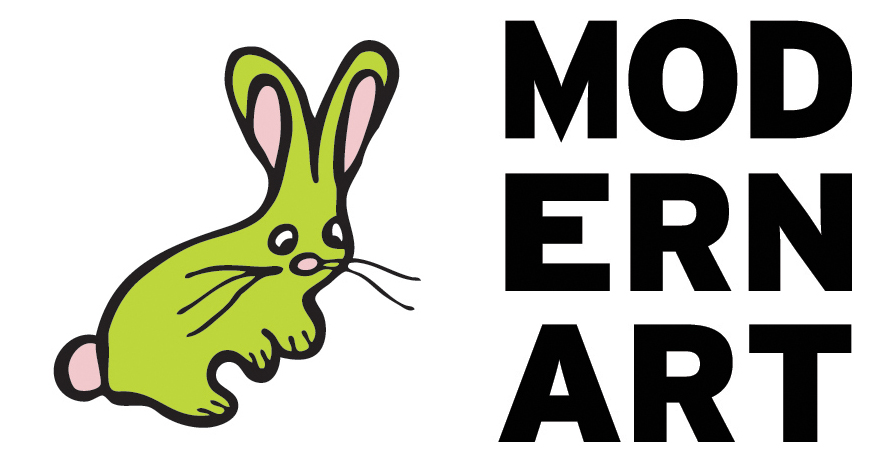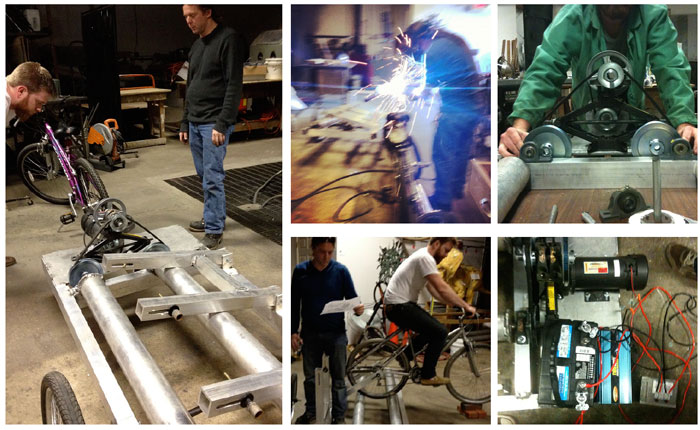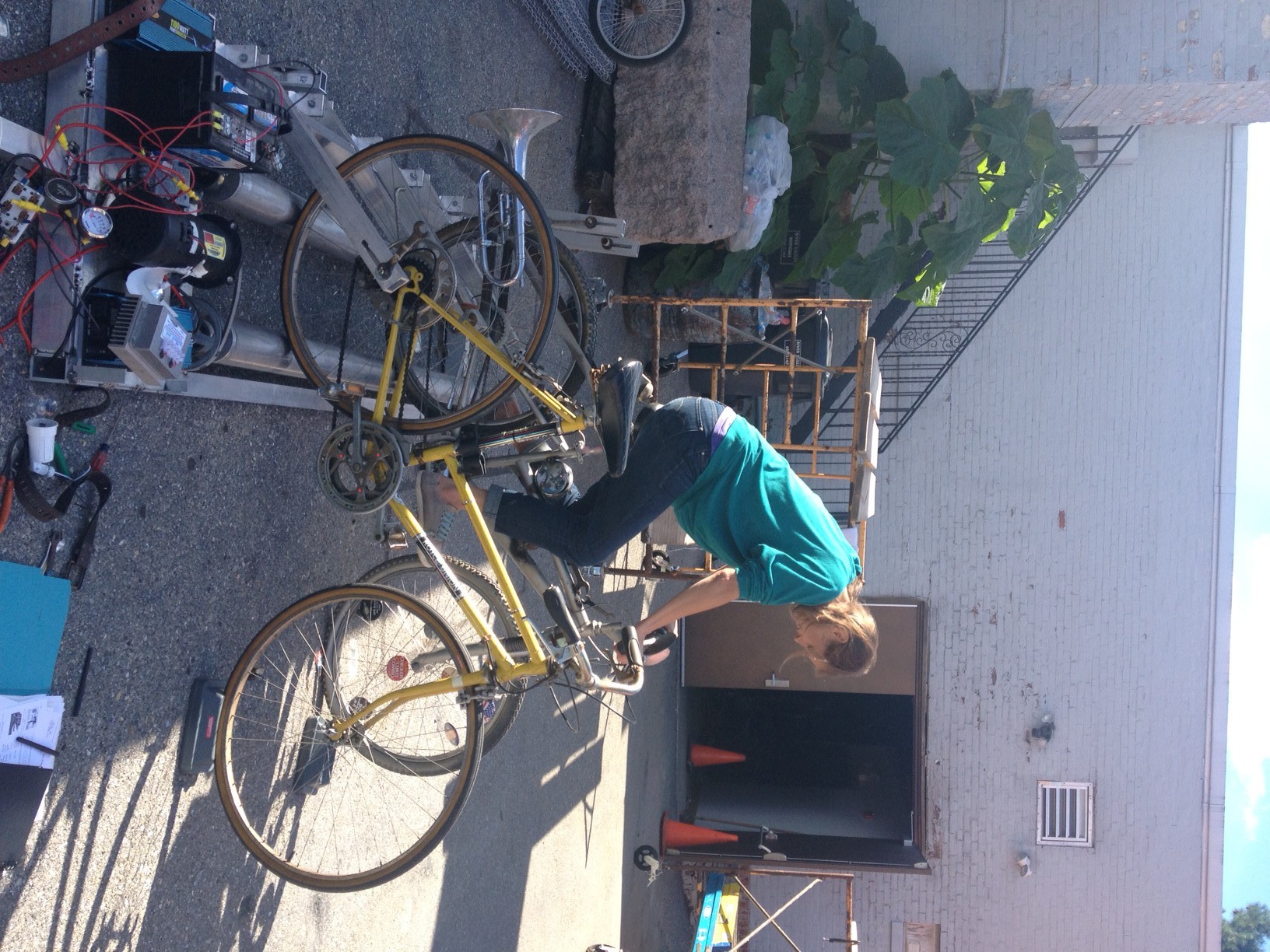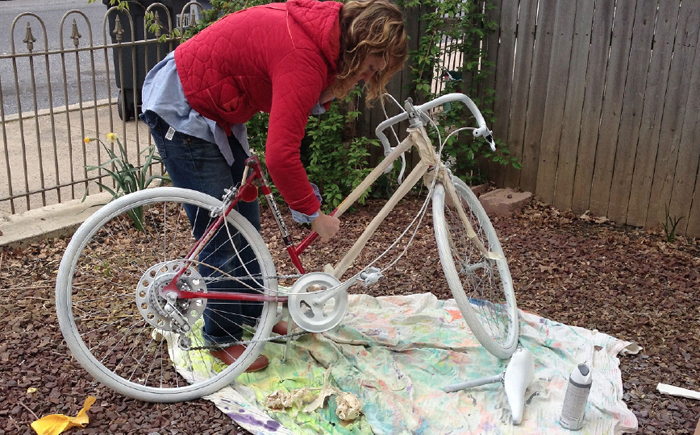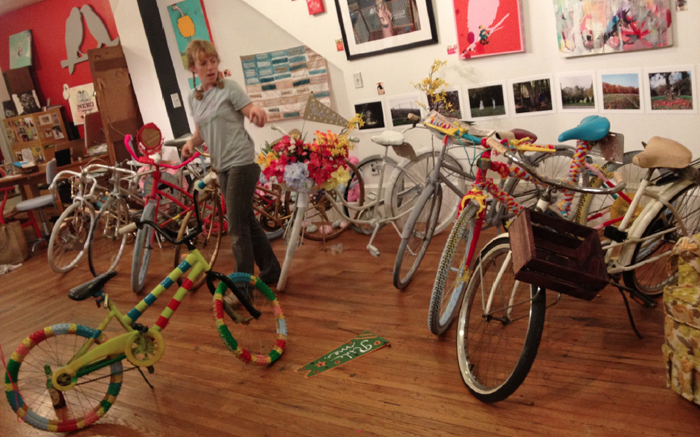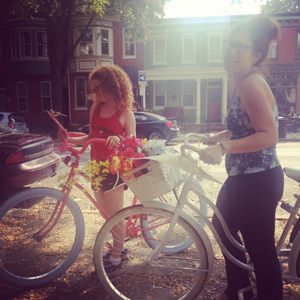 CASE STUDY #2:
The Super Powerful Magic of Failure
CASE STUDY #2:
The Super Powerful Magic of Failure
I haven't failed. I've just found the ten thousand ways that won't work. —Thomas Edison
Months ago I came across the quote above—it was the hidden witticism in a New York Times Sunday crossword puzzle, only fully intact when the puzzle had been successfully solved. Despite weekly attempts, I rarely actually finish the Sunday crossword, so it was with great pride that I found myself in a position to be reading Edison's words of advice. I kept it on my coffee table all week so I could stop and admire my accomplishment. It wasn't until a few days later, after many stops and stares, that Edison's words actually sunk in: I haven't failed if I just found the ten thousand ways that won't work.
Failure. For more than 2 years, I'd been working diligently with some wonderful volunteers and partners on the Super Power Magic Motion Machine (a project conceived to creatively address the issue of climate change, funded by the amazing Invoking the Pause grant). We'd spent countless hours researching, brainstorming, designing, scavenging, building, welding, coaxing generous folks to help....
.....then more dreaming, more design, more ideas....
....after missteps, obstacles, more parts, more metal, more busted tires, toes, and fingers, more redesigns, rewiring, and small explosions, finally, FINALLY we'd created it:
The Super Power Magic Motion Machine: An aluminum bike trailer, which, when stationary, you could attach and stabilize three bikes which, when being pedaled vigorously by three strong adults, could spin a shaft that spun a generator that could power a....
(drum roll please)
...a small light bulb for about 30 seconds.
There it was. Our extremely heavy, awkward, barely mobile, slightly dangerous and not-so-powerful Super Power Magic Motion Machine. Needless to say, it was not the piece of innovative creative genius that we'd spent all those hours dreaming of. In fact, we'd just expended an insane amount of energy creating something that was supposed to show folks how easy it was to create alternative energy. It was discouraging. Desperate not to admit failure, we continued to toy with it. Moved it around. Took off parts. Maybe we could transform it into something else—a stationary piece of public art? A bike rack? An exhibit to show how HARD it is to create energy? Or maybe just an event where we dramatically destroyed the rig and tried to harness all that frustrated energy to power...a tiny light bulb??? Clearly, it was time for a pause. As we paused, we contemplated some of the electricity lessons we'd studied:
Energy is a measure of the capability of an object or system to do work. Energy comes in many forms. Energy cannot be created or destroyed, it can only be changed from one form to another.
Around the same time we had "finished" the SPMMM, I had found beautiful storefront studio to rent. I moved my design business from my home, and with it, moved the SPMMM from the welder's shop who had been helping us build the machine (big shout out to George). We thought we could put the whole project aside for awhile. The rig took up half of the back room. It sat there, daring me not to think about it. I tried to ignore it. I stubbed my toe daily on it, pinched my fingers, pulled my back out whenever I needed to move it (which was often) and constantly yelled to my kids not to touch this thing (this thing that I had bragged was going to be a cool arty educational thing for them!) Folks walked by my studio every day and, seeing it from the window, would ask me what this big aluminum machine was. Sometimes I'd tell them it was just a machine, sometimes open up and give them all the details, but usually I just hopefully replied "its going to be a creative way to harness energy and community spirit"—our original goal. Perhaps if I just said it over and over it would be so.
But the fact was, I couldn't ignore it. I couldn't admit failure. There had to be a way to turn this project back into what we'd originally imagined: a creative way to harness energy. I knew it would eat at me forever if I just let it die, so I set a date of Lancaster's Spring ArtWalk to turn it into something. We had 3 months. Along with the trailer/machine parts, we'd collected a handful of cheap old bikes that we'd hoped to use to power the project. While working on the trailer, I'd spent much of the time thinking of ways to turn these bikes into pieces of art that would work with the SPMMM—it was a nice break from all the technical aspects of creating the pedal power that were so foreign to me. And something I knew how to do: make art. The light bulb went on: Why not take these bikes, turn them into mobile pieces of art. We could then give them out for anyone to ride, for free. This would get people out biking more, remind them how easy it is and how FUN it is. Lancaster was the perfect place to do this: a city that is flat and small with wide roads and alleys, but that oddly, people are afraid to bike in. The bikes, and their riders, would each be their own Super Power Magic Motion machines. It was a new way to creatively harness community energy and spirit. It would encourage people to do something they like to do that also just might help our warming planet. We are all deeply anxious about climate change, but this project would not be about that anxiety, it would be about having fun.
We culled more bikes from Craig's List, the classified ads, friends basement, and turned them each into their own conceptual piece. We created "Gosh Yarnnit!", a bike covered in Yarn, The Bookworm (a trike covered with pages from books and with its own mobile library), The Letterman (complete with a 1956 high school yearbook on the handles), and the Pretty Lady (a nice pink number with a vanity mirror), among others. ArtBike was born.
As we worked on the bikes in the backyard of our studio, we met all sorts of new friends and neighbors who just happened by and helped us fix up the bikes that needed tuning up. In Spring of 2013, at our new studio (now called Modern Art), we opened our doors to anyone who wanted to borrow a bike and explore the city. It was paired with Lancaster's ArtWalk weekend—two days during which galleries all over the city open their doors and put on special events. Folks could grab a bike, an ArtWalk map, and hit all the events on their borrowed bikes. Our first Artbike started with a community bike parade and the momentum has been building ever since. After three successful and fun ArtBike weekends, we now have our fleet available for anyone who'd like to borrow a bike—and its all free.
The reception of ArtBike has continued to inspire and guide our work at Modern Art. How can we work together to create art, harness the exciting and creative energy of our community, and make the world a better place? This last spring, as a sly ode to the light bulb of the Super Power Magic Motion Machine project, we paired ArtBike with an interactive community project called "Ways if I Just". Jo and I painted the words of the aforementioned Thomas Edison quote on nine pieces of wood, then strategically hid the painted words all over the city in places they'd be seen, but not obvious— Central Market, the Public Library, a coffee shop, a Church garden. On each piece, we included a note on the back reading "Please return to Modern Art. You will be handsomely rewarded". We hung "LOST/REWARD" signs with pictures of the pieces, hoping folks might find them. Not knowing which, if any, would make it back, we were curious to see what sentence the words that did come back might read. (Perhaps just "FAILED" will come back, we joked.) But whatever words did would create a new statement that in itself would be interesting. In the end, seven of the nine words came back, all accompanied by surprised, excited, if not a bit confused, folks who'd found them hidden and answered the call. Each left with a portrait under the winner banner and a fancy new trophy. And quite a few with an Artbike ride to top it off. (Check out some great photos of the event here.)
About half way through the SPMMM project, when we hit a particularly rough speed bump with the design, I reached out to a friend who runs a huge tour/staging design company to see if he had any advice. His company builds things like Lady Gaga's 400-ft moving castle and the Olympic's largest human powered screen, so I thought he would be helpful— and he was—I just didn't realize it at the time. He told me I needed to trash the thing and start over. At that point, I was too invested in the project. We'd spent too much time and energy making this big clunky thing, I was going to make it work. "But Libby, it's a prototype," he said "On every project, we always destroy our first prototype. It's part of the process. Making something that doesn't work allows us to learn about what WILL work. Failing is how you learn."
Every failure is a step towards finding out something you didn't know before. Why'd you fail? Sometimes you're asking the wrong question. Or maybe looking for a solution to a problem that isn't the problem you're trying to solve— its a project. An opportunity. When we dreamed up the Super Power Magic Motion machine we were imagining creative ways to address issues of climate change. We'd each been thinking of this problem, and its potential solutions for years and years in our work. It was always something we were trying to solve and we thought so hard about ways to fix it. So hard that we took it literally: we need more alternative energy. We just never thought about exactly what that energy could or should be. Because maybe the problem of climate change, as we understand it, is not what we are trying to solve. Sometimes the answers are not things we HAVE to do, but things we GET to do. We don't HAVE to bike more, we GET to bike more. The answers are right in front of us, we've had the tools for years, its just that we forget about them. Sometimes we need someone to point it out—maybe cover it in yarn—for us to remember.
Check out more Artbike photos here. And the start of some of our great Artbike stories here. And a huge thank you to all of the amazingly generous people involved along the way, those who gave their time, bikes, parts, expertise, advice and support: Jo, Nikki, Marci, Danene, George, Joel, Don, Jessica & Tim, Chris & Brad, Michelle, Steve, Nicole M., Adam, Jacob, Maggie and Invoking the Pause.
